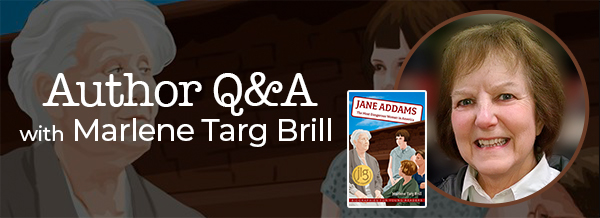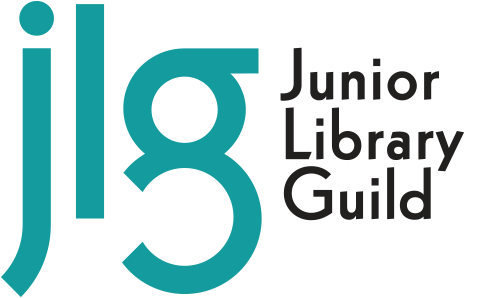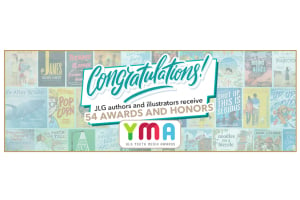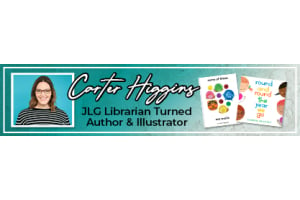Q & A with Marlene Targ Brill


Introduction
Sitting across from me in a “Read Banned Books” t-shirt is the author of almost 74 books—and that number keeps rising. Marlene Targ Brill—former special education teacher, media coordinator, and writer of curriculum for all ages—smiles at me with floor-to-ceiling bookshelves behind her. She tells me that she drifted towards writing nonfiction titles and biographies partly because of her background as a special education teacher; Targ Brill would create materials for her students, and she found that she loved the process. On the other hand, she confesses that she might be pulled to nonfiction writing because she likes to know things:
“I always read [biographies] as a young kid and I don't know if I'm just nosy, but I like learning about people's stories.”
In this special Author Q & A, we’ll learn more about how Jane Addams’ legacy is still impactful today, how the contributions of Hull House laid the foundation for social work, and Marlene Targ Brill’s advice for writers:
“Throughout my research process for this book, I relied mostly on the kindness of librarians. My advice to all the writers out there: be kind to your librarian!”
Q: You have quite a long list of published books! Why do you write primarily for your audience of k-12 readers?
A: Well, I also have a few books for adults, so I’m a mixed bag. My books for adults focus on parenting and experiences from when I was a teacher. When it was time for me to refocus on books for k-12 readers, I was ready for the challenge. My background in education helps me know which words to use for each reading level, how long sentences should be, and what topics may need more explanation than others. I like that for very young readers, every word counts, and as the readers get older, I have a chance to converse with readers through the written page.
Q: How do you choose the topics and people you wish to write about?
A: Sometimes it just happens, like there was one time we were on vacation and my husband picked a museum for us to visit—some type of aeronautical museum overseas—and I thought it was going to be very boring, but on the way in, I saw some kind of plaque with a story about a stowaway cat in a hot air balloon! What in the world? I thought to myself. I knew this had to be a story, and it was something I just stumbled upon. Or one time, I drove through Indianapolis to research a book about Indiana and saw something called Major Taylor Velodrome. I had no idea what a velodrome was or who Major Taylor was, but I thought, he must be really important to have his name on such a large stadium! Turns out a velodrome is a bicycle racing stadium, and Marshall Major Taylor was the first international Black racing star in the world. That curiosity is what became my book, Marshall "Major" Taylor: World Champion Bicyclist, 1899. You never know when inspiration might strike…
I also read a lot and reading is both a good way to improve your writing and to get ideas. I read the newspaper every day to see what people might be interested in and what is current. When I’m doing research for a new project, I’m of course reading through different sources and learning about other people from many different periods throughout history.
Q: How did you first discover the Dangerous Jane Addams and what inspired you to share her story?
A: Jane Addams was somebody who I had been wanting to write about for decades, but at the time I started writing, I had other author friends who had just written about her, and I didn't want to reinvent the wheel. I set that idea aside and sent out a proposal for The Dangerous Women of Hull House: A Collection. When I sent it to my publisher at Ohio University, they said, “Well, we haven’t really published collections for young people… but what if you wrote a biography of Jane Addams?”
It was quite the full circle moment for me! This is exactly what I wanted to do.
I think what initially inspired me, of course, is being a native Chicagoan. I’ve always known about Hull House and its connection to social work, but I didn’t know how much Jane Addams’ impact had nationally and internationally. She did everything from being a garbage inspector to being on the school board, to starting the International Women's League for Peace and Freedom (that still meets today!), advocating for immigrant groups and women’s suffrage, and more. I don’t think that woman ever slept! Now, she came from an affluent family, so she did have a little bit of a leg up, like when her father left her a sizable amount of money after he died. Jane focused all her energy, money, and anything else she had on trying to make the world a better place. She also had a childhood illness that pained her throughout life, and she was able to accomplish all these amazing things while having to overcome this hardship.
The more I learned about Jane Addams, the more excited I became that I was able to write about her.
Q: Can you tell us about your research and writing process for your recent JLG selection, Jane Addams: The Most Dangerous Woman in America?
A: Throughout my research process for this book, I relied mostly on the kindness of librarians. My advice to all the writers out there: be kind to your librarian! Researching this book was a challenge because I began during the Covid-19 pandemic. Usually, I like to visit all the places I’m researching—like Jane’s hometown—and get a feel for the place, but I couldn’t just pick up and go places during this time, so I began my research online.
Reminder: Don’t believe everything you read online!
I found some wonderful people to connect with by reading articles and then going to their citations so I could go back to the original references. That’s where the process really started. Next, I called the Cedarville Historical Society where people were so generous. They told me that there are a couple of Jane Addams collections at universities, and that’s where a lot of the photos in my book came from. Most of the Hull House information is in the Special Collections at the University of Illinois in Chicago, so I contacted them for details but was unable to visit Hull House due to the pandemic.
Q: Describe Jane Addams in 3 words.
A: You know, I started trying to think of three words like you asked, but I wasn't really good at it. I first came up with brave, persistent, and smart, but then there was also the genteel side of Jane, the amazing problem solver she was, and how she was an objective and a good listener—I think that rounds out her personality. She wasn't just one thing or another, but she was definitely a can-do person. I guess if you boil it down to one thing, that would be it. There wasn't anything she couldn't do.
Her father was just like her. For instance, there was no school in Cedarville, so he started one; there was no library, so he opened up his personal library to the community; there were no banks nearby, so he started one in a neighboring village.
I think Jane learned from her dad that if you had an idea and it needed to be done, you could just do it, and so she did.
Q: In your opinion, what was Hull-House’s greatest contribution to its residents?
A: Contributions of Hull House were two-fold. One area encompassed what the welcoming setting offered visitors and the community at the time. The other involved its lasting impact. The concept evolved into today's community houses and the influence of the professionals who resided there and shared their varied expertise went nationwide in areas of child protection, factory safety, immigration and minority rights, and the women's vote.
One of Hull House’s greatest contributions to not just its residents, but in general, is how it became a forerunner of the community centers that we see nowadays. When I was doing research in the Cleveland area, I found at least half a dozen settlement houses that were offshoots of Hull House. These settlement houses tended to cater to different ethnic groups of people. Hull House was open to everyone, no matter their cultural background, religion, or any of their beliefs. The doors were open for both residents and volunteers. Anyone could come to learn from one another.
Hull House was set right in the middle of different immigrant communities and places where poverty rates were high. It was near stockyards and sweatshops where people were making mostly men’s clothing. (Usually, people think of New York when they think about clothing production, but men's clothes were in Chicago, and women's were in New York.) When I was growing up in Chicago, there were different sections of the city where people from ethnic groups resided (Little Italy, Chinatown, etc.), but Jane wanted to mute those boundary lines—she was open to everyone and every philosophical idea. Even when World War 1 broke out, everyone was welcome at Hull House, no matter if they were for it or against it. She created a home for everyone.
Another great contribution of Hull House was that it acted as a safe space for information sharing between cultures. If something was needed at Hull House, Jane would make it happen, so when people came who needed to learn English, she would make sure there were English classes available. The co-sponsor of Hull House, Ellen Gates Starr, was originally an art teacher and thus taught art classes that were open to everybody. She went on to form an art gallery. Eventually, she further impacted the surrounding communities by encouraging the first art class at the Art Institute of Chicago and for art to be implemented in the curriculum at Chicago Public Schools.
In addition to Hull House providing classes and information to people, it was also a place where people could socialize and mingle together. Dinnertime consisted of open meals, and all were invited. They would create dances and celebrate holidays from different ethnic groups, and people were encouraged to get to know others. We could certainly use more of that today!
Importantly, Hull House set the foundations of the School of Social Work, the Federal Bureau for Children, and even factory inspections. She was able to bring people together and help others communicate when things needed changing.
Q: Amid difficulties with both her physical and mental health, Jane once said, “Always do what you are scared to do.” Do you think Jane could have afforded to be kinder or more patient with herself? How might that have changed her legacy?
A: Jane had a longtime partner named Mary Rozet Smith, and when things got too heavy for Jane or if she was feeling ill, she would go to where Mary and her parents lived to rest. I did not read anything that suggested Jane ever complained about her health, but I’m sure it happened—we all need breaks. Jane especially needed breaks between traveling (which in those days meant up to six weeks on a ship) and between writing her books. Did you know she wrote 11 books to earn more money for Hull House and the nieces and nephews she took care of? Jane also wrote articles for the Atlantic Monthly and all kinds of publications.
Q: If you could meet Jane Addams today, what would you want to talk about with her or what would you like to ask her?
A: That's a hard one…
For starters, I’d like to know what kept her going. How did she get so much done in so many different areas of life? She did everything from shroud bodies to birth children—and it’s not like she was professionally trained to do most of this stuff. Jane was a bit of a “pampered pup” growing up, so this was all new to her, and she didn’t seem daunted by any of it.
I would also like to ask her what she thinks of politics today and what she thinks we could do to support women and people from all different nationalities and backgrounds. I think she’d be happy with our progress in LGBTQ+ Rights, but I also know she would have more ideas on how to drive us forward. I'd be curious to think what she thinks of it and how we could solve some of these problems.
Jane was gentle yet strong. I read lots of quotes from people who said what a good listener she was and how nonjudgmental she was. I feel like that’s very important for a leader.
Q: What advice would you offer to your young female readers who are not given the same opportunities as men?
A: First, believe in yourself. If it's something you're really interested in or you happen to be passionate about, don't let anybody dissuade you. You must also be persistent: do not take no for an answer. If there’s something you think is unjust, state it—say what you mean. You don’t have to attack people or be aggressive, but if there’s a problem, there’s a way to solve it.
Whenever I go to school visits, I get asked about my favorite book. I always say The Carrot Seed by Ruth Krauss. It’s about a little boy who finds a carrot seed, and on every page, someone tells him the seed will never grow, but he plants the seed anyway. At the end of the book, there is this wheelbarrow full of a humongous carrot! I think to myself, That’s me, that’s my story.
When I started writing, everybody asked me, “Don’t you know how hard that is going to be?” yet here I am with 73 published books later. I used their words of discouragement as fuel, and motivation.
Q: Are you working on any new projects?
A: Yes, another biography! I always read them as a young kid and I don't know if I'm just nosy, but I like learning about people's stories. I’ve really enjoyed working with Ohio University Press, so I was excited to write another book for them. This story is about Judith Resnik, one of the astronauts on the Challenger when it unfortunately exploded. I am learning so much, like how Judith was interested in engineering and math and was a superstar in everything she did. I’m also learning a lot about stars and space. I’ve been interviewing people who knew Judith for my research.
Q: How can readers and librarians connect with you?
A: The easiest way to connect with me is by visiting my website: marlenetargbrill.com
I'm excited to talk about Jane Addams or any of my books or about writing and publishing. I'd be happy to adjust my visit to meet the needs of student curricula to any age reader.
Marlene Targ Brill’s book Jane Addams: The Most Dangerous Woman in America is available in JLG’s Biography Middle Plus category this September—make sure to add it to your monthly book box! If your readers enjoyed this book as much as we did, please tag us on our social media channels.









